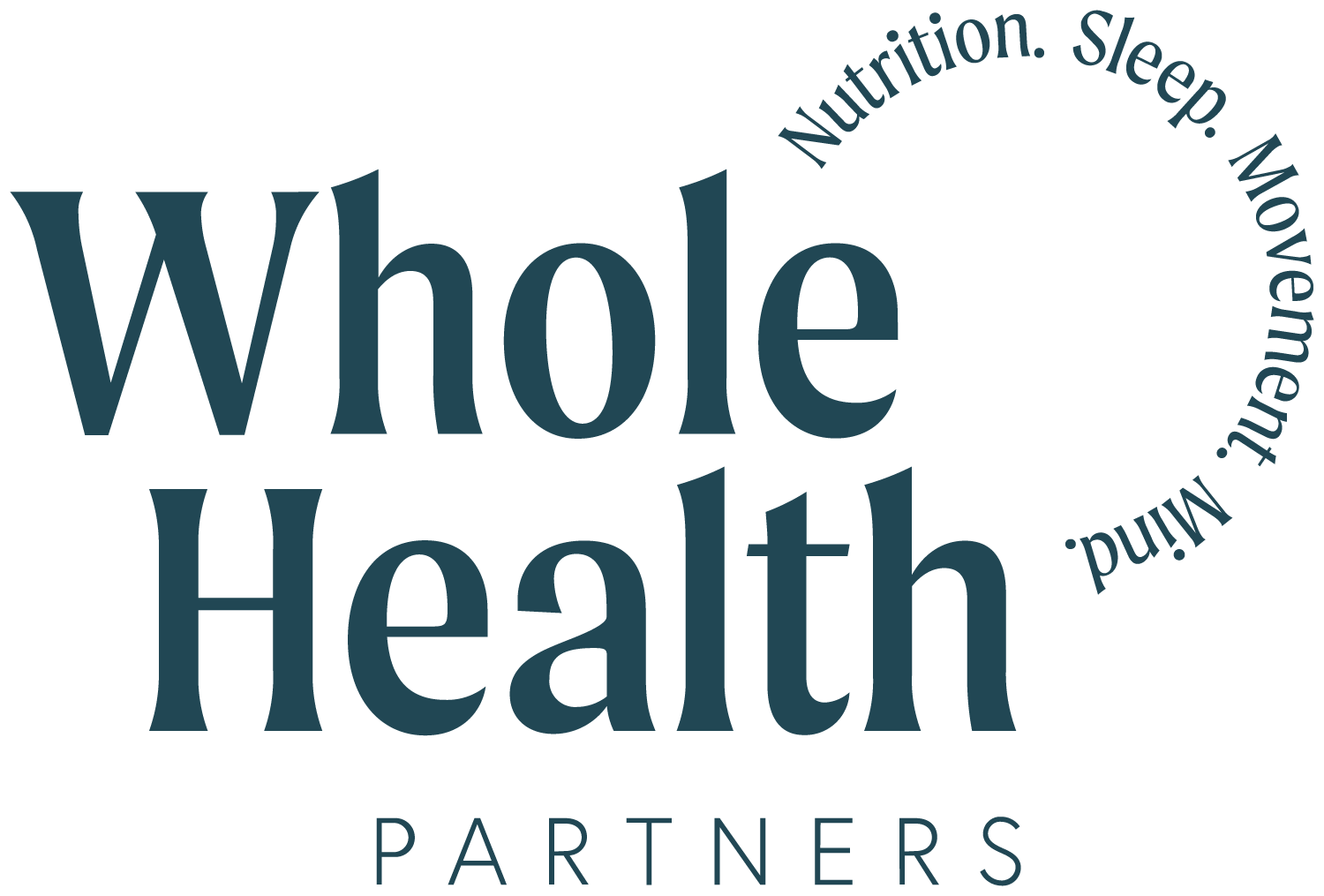How to Lower Cholesterol Without Statins: Exercise and Weight Management
At Whole Health Partners, we understand that managing cholesterol naturally starts with how you move your body and maintain a healthy weight. Regular physical activity and achieving optimal weight are powerful tools for naturally improving your cholesterol profile.
Exercise works as nature's medicine by boosting beneficial high-density lipoprotein (HDL) cholesterol while helping to lower harmful low-density lipoprotein (LDL) levels. When combined with mindful weight management, these lifestyle practices create a foundation for lasting heart health without relying solely on medication. Even modest activity and weight improvements can significantly benefit your cholesterol numbers.
We're committed to guiding you through practical, sustainable exercise strategies and weight management approaches that fit your needs. These strategies will empower you to control your cholesterol and protect your cardiovascular health for years to come.
If you haven’t already, read Part 1 of this blog series first to understand the ins and outs of healthy cholesterol, “bad” cholesterol, and the dietary changes, such as swapping saturated fats for unsaturated fats, eliminating trans fats, and creating a healthy diet plan, you can make as natural alternatives to statins.
Exercise and Weight Management for Cholesterol
Weight Loss: A Powerful Cholesterol Regulator
Even modest weight loss, as little as 5-10% of your body weight, can significantly improve cholesterol profiles. Losing weight can lower LDL cholesterol, triglycerides, and total cholesterol while raising HDL cholesterol. It's not just about the number on the scale; it's about the positive changes happening within your body. Focus on sustainable, gradual weight loss (think ½ pound per week).
Exercise: Move Your Way to Healthier Cholesterol
Exercise is a potent tool for improving cholesterol and triglyceride levels. Physical activity has a multifaceted impact:
Lowers LDL Cholesterol: Exercise can help reduce the amount of LDL cholesterol circulating in your bloodstream.
Raises HDL Cholesterol: Regular physical activity can boost HDL cholesterol levels, which acts as a "scavenger," removing LDL cholesterol from the arteries.
Lowers Triglycerides: Exercise can help lower triglyceride levels, another type of fat in the blood that can contribute to heart disease.
Improves Circulation: Exercise promotes healthy blood flow, benefiting cardiovascular health.
Best Types of Exercise for Cholesterol Management
Aerobic Activity: Activities like brisk walking, jogging, swimming, cycling, and dancing improve high levels of cholesterol. Aim for at least 30 minutes of moderate-intensity aerobic exercise most days of the week.
Strength Training: Don't underestimate the power of strength training! Lifting weights or using resistance bands can also lower LDL cholesterol and raise HDL cholesterol. Include strength training exercises 2-3 times weekly, targeting all major muscle groups.
High-Intensity Interval Training (HIIT): HIIT involves short bursts of intense exercise followed by brief recovery periods. This type of training can be particularly effective for improving cholesterol profiles and burning calories. However, it's essential to start gradually and consult with your doctor before starting HIIT, especially if you have any underlying health conditions.
Tips for Making Exercise a Regular Part of Life
Find Activities You Enjoy: The key to sticking with an exercise routine is choosing activities that bring you joy. Whether hiking, playing tennis, or taking a Zumba class, find something that motivates you.
Start Slowly and Gradually Increase Intensity: Don't try to do too much too soon. Begin by increasing the frequency of your daily movement and gradually increasing the duration and intensity as you get fitter.
Schedule Exercise into Your Day: Treat your workouts like important appointments and schedule them into your day.
Find an Exercise Buddy: Having someone to exercise with can provide motivation and accountability.
Set Realistic Goals: Set achievable goals for yourself and celebrate your progress.
Natural Supplements for Cholesterol Support
Several natural dietary supplements exist that can work alongside exercise routines to lower cholesterol, blood pressure, the risk of heart disease, and other cardiovascular diseases. These include:
Plant Sterols and Stanols (Phytosterols): These compounds, found in small amounts in plant-based foods, can help block cholesterol absorption in the intestines, lowering LDL cholesterol levels. They are often added to foods like yogurt or orange juice, or available in supplement form.
Psyllium: This soluble fiber, derived from the psyllium husk, acts like other soluble fibers in the diet. It binds to cholesterol in the digestive tract, helping your body eliminate it.
Red Yeast Rice: This traditional Chinese medicine contains monacolins, some chemically similar to statin medications. Red yeast rice may help lower LDL cholesterol, but it's crucial to know that the potency and quality of red yeast rice supplements can vary significantly.
Omega-3 Fatty Acids (from Fish Oil): These essential fatty acids, abundant in fatty fish, can lower high triglycerides, raise HDL cholesterol, and may have other cardiovascular benefits. Fish oil supplements are a common way to increase omega-3 intake.
While these natural supplements may offer potential benefits for cholesterol management, it's absolutely crucial to consult with your healthcare provider before starting any new supplement regimen.
Take Charge of Your Heart Health
Your heart health is in your hands. Don't wait for problems to arise—take proactive steps today to lower your cholesterol naturally and safeguard your well-being.
As we've discussed, managing cholesterol effectively comes down to two powerful lifestyle approaches:
Prioritizing Regular Exercise: Aim for at least 30 minutes of moderate-intensity exercise most days. Find activities you enjoy to make it a sustainable habit. Movement is medicine for your cholesterol levels, whether brisk walking, swimming, or dancing.
Maintaining a Healthy Weight: Losing even a small amount of weight can significantly impact your amount of cholesterol. Each pound shed can improve your HDL/LDL ratio and reduce strain on your cardiovascular system.
At Whole Health Partners, we believe these two fundamental practices create the foundation for natural cholesterol management. By committing to regular physical activity and mindful weight management, you're not just addressing symptoms—you're nurturing your body's innate ability to maintain optimal cholesterol levels and protect your heart for years to come.
Ready to control cholesterol and create a personalized plan for optimal heart health? Contact Whole Health Partners today for a consultation. We can help you navigate the world of natural cholesterol management and develop a strategy that fits your unique needs and lifestyle. Don't wait—your heart will thank you!
FAQ About Cholesterol Management
What are the side effects of statins?
We recognize that while statins effectively lower cholesterol for many individuals, they may bring unwanted side effects for some. Commonly reported side effects include muscle pain and weakness, ranging from mild discomfort to more severe myopathy.
Some patients experience digestive issues like nausea or constipation, liver function changes, or slightly elevated blood sugar levels. Some individuals have also reported memory problems and mental fog. We believe in informed decision-making—understanding potential side effects allows you to have meaningful conversations with your healthcare provider about whether the benefits outweigh these possible concerns for your unique situation.
What is a normal cholesterol level?
We consider optimal total cholesterol levels below 200 mg/dL, with LDL (often called "bad" cholesterol) ideally under 100 mg/dL. HDL, your protective "good" cholesterol, functions best at 60 mg/dL or higher, especially for women. Triglycerides, another blood fat, should remain under 150 mg/dL. However, we understand that these numbers represent general guidelines rather than rigid rules. Your optimal cholesterol levels may vary based on your overall health picture, including age, family history, and existing health conditions. We believe in personalized assessment rather than one-size-fits-all targets when developing your natural heart health strategy.
Explore Our Services
Women’s Health: Hormonal Health, Polycystic Ovarian Syndrome (PCOS), and Perimenopause/Menopause
Diabetes, Pre-Diabetes, Insulin Resistance, and Blood Glucose Management
High Blood Pressure/Hypertension Management
High Cholesterol Management
Lifestyle Medicine





